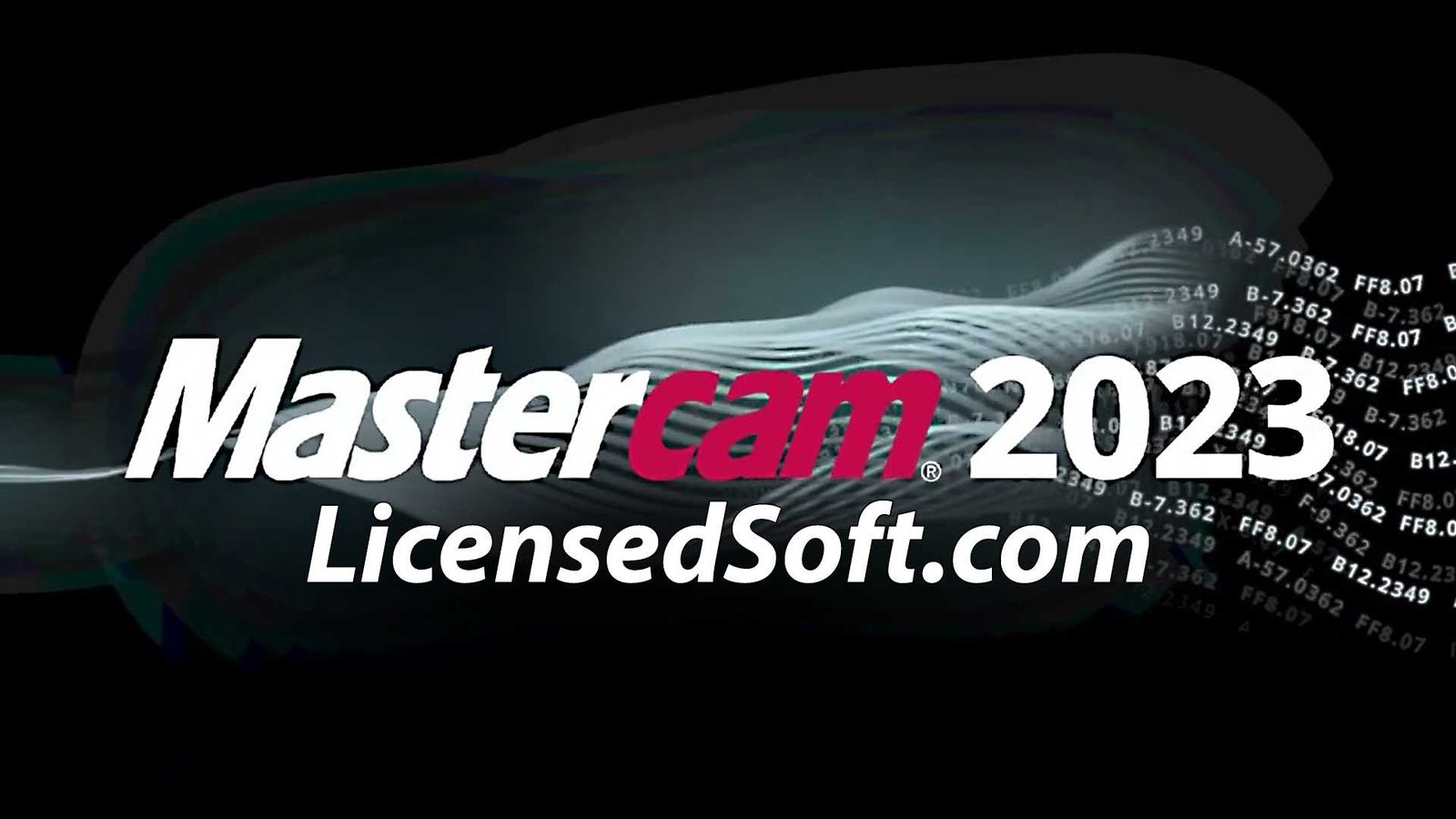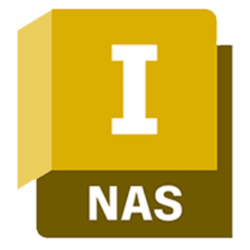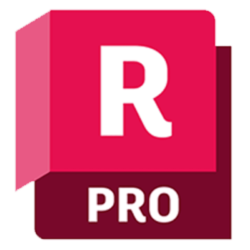Mastercam 2023 v25.0.15584.0 version is an efficient and professional practical CAD/CAM design assistance tool, which provides users with real CAD/CAM software solutions, and can easily design various complex curves, surface parts, tool paths, etc. Can meet all the needs of users. Suitable for all major manufacturing industries, many professional modules can easily solve various complex tasks, improve the processing flow, shorten the processing cycle, increase productivity, and make the processing effect better and perfect.
The use provides the best programming solution to meet the actual situation. Various needs in production, and the operation is more smooth and simple, and it is easier to control and adjust. It also includes the Mastercam For SOLIDWORKS module, which is designed to easily and accurately design parts, to use wood carving machines, milling machines, lathes, Perform 2D, 3D and multi-axis machining programming, provide a tool path library integrated in the SOLIDWORKS environment, which can directly called and used, fast and intelligent design, easy modification of tool paths and workpiece features, personalized and flexible editing, faster realization Better machining programming.
Mastercam 2023 Highlights
1. Faster and more flexible multi-axis programming
As more shops look to take advantage of single-setup, multi-axis cutting strategies, Mastercam 2022 adds new technologies and strategies such as Unified Multi-Axis Toolpath, which lets you select multiple input geometries to generate a toolpath pattern. Using these geometry choices, Toolpath will choose the best algorithm to calculate the path. Multiple deburring toolpaths support flat chamfered and rounded edges, which provides the user with greater flexibility so that the deburring toolpath can create high-quality surfaces on larger chamfered or rounded edges finish.
2. Advances in modeling
Introduces powerful mesh creation and editing capabilities that provide new types of modeling tools, including the ability to reconstruct models from scan data. The ability to edit wireframe geometry directly without interacting with dialog boxes speeds design and modification work. And, the UV Flood feature lets you replace multiple surfaces with inconsistent flow with a single surface from one streamlined toolpath. You can also simplify surfaces for general modeling. Spilling UVs produces a single unified surface with the desired UV flow over a joined set of surfaces.
3. Enhanced intelligence and automation
A suite of system-wide enhancements helps automate tasks and speed up workflows. The new automatic region linking uses a “smart” method to automatically select logical link regions. Use imported solids as Mastercam will now automatically extract the appropriate information and pre-populate your programming options. You can also get SOLIDWORKS 2023 SP3 Full By LicensedSoft.

Mastercam 2023 Features:
1. Flexible geometry editing function
- You can change the line weight, line style, and color of a single entity or all entities.
- Quickly modify parameters such as line length and arc radius.
- Transition fillets or chamfers are handy.
- Extend the length of lines, arcs, splines, and surfaces.
- For trimmed single or multiple surfaces, the undo function can used to restore the original surfaces.
- Quickly translate, mirror, and scale entities.
- Transform entities isometrically.
2. Powerful surface modeling function
- Generate parametric and non-uniform rational B-spline surfaces using methods such as Loft, Ruled, Revolved, Swept, Draft, Coons patch, and Offset.
- Can produce various complex welded surfaces.
- Quickly generate flat surfaces from rectangles or any planar shape with closed boundaries.
- Generate swept surfaces with an unlimited number of section curves.
- Use a set of curves, a set of planes, or a set of surfaces to trim another surface or set of surfaces.
- When using the Undo function to restore the trimmed surface, it can restored at one time or only one boundary at a time.
- Extremely easy to extend or split surfaces.
- The flexible transition surface function can generate equal-radius and variable-radius transition surfaces between surfaces.
- During mold design, the parting line is automatically calculated.
- 3D surface voxels can quickly generated by a parameterized method. Such as cuboid, sphere, cylinder, cone and other shapes of voxels.
- You can continue to construct, edit, and manipulate the model on the rendered surface model.
3. Drawing function
- Automatic dimensioning.
- The associated dimension changes automatically when the geometry is modified.
- Dimensions in the form of horizontal, vertical, parallel, baseline, dimensional chain, angle, diameter, radius, coordinate, and point-coordinate can generated, as well as annotations and symbols.
- Callouts can dragged and placed at will, just as they are being created. It is also very convenient to modify their properties.
- Sketches can drawn or printed in color.
- The system has built-in line type library and section line library.
New features in Mastercam 2023
1. Detect undercut blanks during processing
- Dynamic OptiRough and Area Roughing toolpaths now understand undercut stock conditions, resulting in improved toolpath motion, including reduced air cutting.
- This new Detect Undercut Stock option is located on the Stock page, and is only available when Previous Operations is set to Other Operations.
2. Combine multi-axis toolpaths
Deformation, Parallel, Along Curve, and Projected Curve are no longer separate toolpaths in Mastercam. Conversely, Unified Toolpaths allow access to these cutting modes when you add the appropriate curves. For example, to create a toolpath that morphs between two surfaces, select Unity from Multi-Axis Toolpath, then use the Morph style to set the cut pattern to both surfaces, as shown in the image below:
- Toolpaths from previous versions of the files are automatically converted to unified toolpaths as follows:
- Morph – A unified toolpath that becomes a cutting pattern of two curves or surfaces with a deformed style.
- Parallel – (set to Curves or Surface): Uniform toolpaths that become a cutting pattern of one curve or surface with a parallel style.
- Parallel – (set to Angle): Becomes a uniform toolpath with a planar cut pattern, style set to the appropriate plane.
- Along Curves – Becomes a unified toolpath for curved cut patterns with vertical styles.
- Project Curves – Becomes a unified toolpath with project-style curve cut patterns.
3. New B-axis profile turning toolpath
Mastercam 2023 introduces new toolpaths for the turning suite of Mill-Turn products. B-Axis Profile Turning is a finishing toolpath that allows the B-axis to rotate while the tool is cutting. This new toolpath can found in the General library in the MillTurn contextual tab.
4. Check Mesh Enhancement
Listed below are enhancements made to the inspect grid functionality.
- Remove the problematic aspect
- Check Mesh now includes a new option to delete question facets. By selecting this option, Mastercam will remove all wrongly identified aspects.
- Detect folded faces
- Check Mesh now detects folded faces, where adjacent nodes are pulled onto an existing face, creating creases that have no geometric meaning.
- If Check Mesh finds a folded face, Mastercam marks the bad face with a circular dot indicator.
5. Attach the operation to the current Mastercam simulator session
Mastercam 2023 now includes the ability to add actions to the current verification session. While validating, you can add more operations using the Validate Selected Operations drop-down menu in the Toolpath Manager. From this drop-down list, you can choose to add to the current verification or verify the selected machine group. Validate selected action button behaves the same as previous versions.
- There are some restrictions when adding operations to the current session:
- Only operations below the selected operation in the Toolpath Manager are added to the current session.
- An action that depends on a previous action cannot added unless a parent action is also selected.
6. Add inventory awareness for holder checks
Dynamic OptiRough, Area Roughing, and Horizontal Area toolpaths with rest material enabled on the Stock page now recognize stock outside the containment boundary when collision checking is enabled on the Holder page. Previous versions of Mastercam did not check for any part of the stock model that existed outside the containment boundary.
7. New workflow and interface for managing machine groups
Mastercam 2023 introduces new machine group setup function panels for mill and router machine groups. This New Features panel contains features and functionality from the machine group properties dialog, including new features. These changes continue Mastercam’s efforts towards kinematic perception.
Previous locations for setting up geometry and job setup information such as inventory, fixtures, and machine definitions have consolidated into one location, making it easier for you to work with your parts. When you select File, Tool Setup or Stock Setup under Properties for a Mill or Router machine in Toolpath Manager, the Machine Group Setup function panel opens.
This new interface includes everything you need to set up your parts, including parameters for Mastercam Simulator. The Functions panel has seven pages, providing a top-down structured workflow, from setting up your machine definitions to selecting which machines to display during the simulation.
Machine—Specifies the name and data path of the file required for operations in the machine group. This includes machine definitions and operational defaults.
Master Model – Defines the final part after all machining is done (called the master model). This page also includes engineering information such as materials.
Notes:
You don’t need to define a main model. However, defining a master model provides Mastercam Simulator with artifact data, ensuring that you always define artifacts.
- Inventory Settings – Defines the inventory model. Stock models help you visualize your toolpaths more realistically in the graphics window. The defined stock model can also displayed alongside the part geometry when viewing a file or toolpath, or during the Mastercam simulator.
- Workholding – Allows you to select fixtures and other workholding components using the master model and stock. These components are then converted to Mastercam Simulator as Fixtures which you can use for collision checking.
- Tool – Controls how Mastercam assigns tool numbers, tool offset numbers, and default values for feeds, speeds, coolants, and other toolpath parameters.
- Simulation – Allows you to modify a machine saved with a Mastercam Machine Definition (*.mcam-mmd) for use with a Mastercam simulator.
8. Use ruled/lofted surfaces to create consistent stream lines
Irregular stream lines on the surface sometimes occur when the surface is created from separate curves with inconsistent point spacing. Connecting these points with constant parameter values, as the Surface Ruled/Lofted functions do, can produce undesired stream lines, which can lead to undesired surface shapes.
- By generating imaginary spine curves from your selection, Dynasync provides an invisible “backbone” for surface flow. This backbone provides a new set of alignment points for the wireframe chain.
- There are three ways to generate Dynamic Sync spine curves.
- Average from all selected chains. The spine curve creates a point on the wireframe perpendicular to it.
- from your selected entity. The resulting surface uses the point spacing of the selected entity to create points on the wireframe perpendicular to it.
- By projecting on each curve a set of points that are perpendicular to the previous curve by a minimum distance. Use this option when the spine curve cannot generated from the Average and Solid options, or produces undesired results.
- Combined with Dynamic Sync, Mastercam brings additional function to Surface Ruled/Lofted, giving you more control over chain selection and surface creation. Surface Ruled/Lofted now includes a selection list that allows you to view your selected chains. You can add, delete, reverse or reorder chains using the right-click menu or by dragging and dropping chains. You can also use the Select Chain and Reselect Chain buttons located below the list box.
9. Use push and pull to create chamfers
Push-Pull now includes a new chamfer option, which allows you to push selected edges to create single distance chamfers. Push or pull selected edges to modify an already having chamfer. This new option makes it easy to create chamfers on solid edges.




